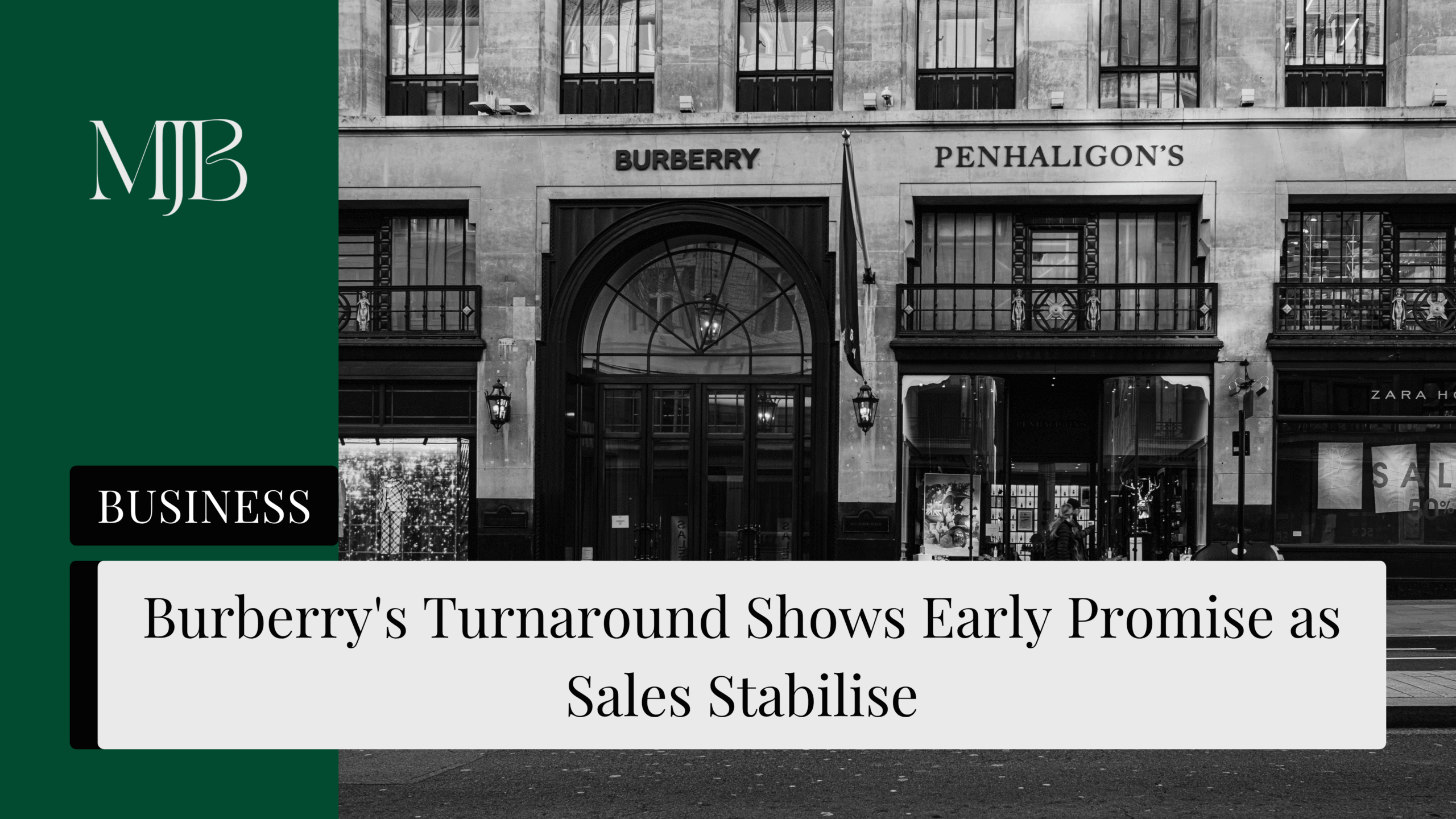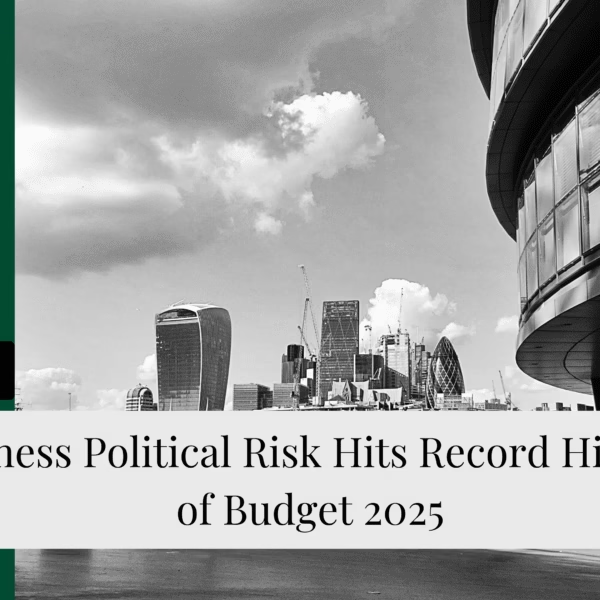Recall when Burberry was the poster child for luxury brand struggles? Well, things might finally be looking up. The British fashion house just posted its Q1 numbers, and while they’re not exactly celebration-worthy, they’re significantly better than the train wreck we saw last year.
CEO Joshua Schulman’s early moves are starting to pay off, with retail revenue down just 6% to £433m and comparable store sales dropping only 1% – a massive improvement from the brutal 21% plunge this time last year. The luxury brand turnaround appears to be gaining traction as Burberry’s recovery strategy shows early promise.
The Numbers Don’t Lie: Progress is Real
Burberry’s Q1 performance tells a tale of two markets. The good news? The US and EMEIA regions are showing green shoots, with sales up 4% and 1% respectively.
The not-so-good news? Asia’s still dragging things down. Greater China fell 5%, while the broader Asia-Pacific region dropped 4%, largely thanks to weak Japanese demand.
Schulman’s Autumn 2025 collection is already making waves in stores. Core categories like outerwear and scarves (you know, the stuff Burberry actually does well) are performing stronger, and online sales are picking up steam.
Schulman’s Strategic Gamble: ‘Burberry Forward’
The new CEO isn’t just tweaking around the edges. His ‘Burberry Forward’ transformation plan is all about simplifying operations and boosting productivity – basically, cutting the fat and focussing on what works.
The target? £80m in annual cost savings by 2026. That’s big money, and they’re backing it up with monthly campaigns that lean hard into British heritage themes. Smart move, considering that’s literally Burberry’s bread and butter.
Burberry Stock Performance: From Bottom to Potential FTSE 100
Burberry’s stock has been on an absolute tear lately – more than doubling in three months from 654p in April to over 1,250p today. That’s the kind of bounce that gets investors’ attention.
This surge has Burberry eyeing a potential return to the FTSE 100, less than a year after getting booted from London’s premier index. A potential comeback story in the making.
Schulman’s got skin in the game too – his pay deal is directly tied to share price performance, with a potential bonus worth 300% of his £1.2m salary if he can push the brand back into the top tier. Nothing like financial incentives to focus the mind.
Reality Check: Still Early Days
Let’s not get carried away here. Burberry’s coming off a rough year with a £66m full-year loss and revenue dropping to £2.46bn. The luxury market remains fragile, and macro headwinds aren’t exactly helping.
But the company’s confident enough to tell investors they expect the strategy’s impact to build momentum in the second half. Whether that optimism is justified remains to be seen.
Key Takeaways
Burberry’s turnaround is showing early promise, but it’s still a work in progress. Schulman’s focussed approach on core strengths and cost-cutting could be the recipe for success, especially if consumer confidence in luxury goods rebounds.
For investors, the recent stock surge reflects growing optimism, but remember – we’re still in the early stages of what could be a multi-year transformation. Want to stay updated on Burberry’s progress? Keep an eye on their next quarterly results for signs of sustained recovery.
FAQ
Q1: Is Burberry’s turnaround strategy working?
A: Early signs suggest yes, with sales declines moderating significantly from last year’s 21% drop to just 1% in comparable store sales. However, it’s still early days in Schulman’s transformation plan.
Q2: Why is Asia still struggling for Burberry?
A: Greater China sales fell 5% and broader Asia-Pacific dropped 4%, primarily due to weak demand in Japan and ongoing economic headwinds in the region. Luxury spending remains subdued in these key markets.
Q3: What’s driving Burberry’s stock price surge?
A: Investor optimism around CEO Joshua Schulman’s turnaround strategy has pushed shares up over 100% in three months. The potential for FTSE 100 re-entry is also generating excitement.
Q4: How realistic are Burberry’s cost-saving targets?
A: The £80m annual savings target by 2026 through their ‘Burberry Forward’ plan appears achievable given their focus on operational simplification and productivity improvements. Monthly heritage-focussed campaigns also suggest a more targeted marketing approach.
DISCLAIMER
Effective Date: 15th July 2025
The information provided on this website is for informational and educational purposes only and reflects the personal opinions of the author(s). It is not intended as financial, investment, tax, or legal advice.
We are not certified financial advisers. None of the content on this website constitutes a recommendation to buy, sell, or hold any financial product, asset, or service. You should not rely on any information provided here to make financial decisions.
We strongly recommend that you:
- Conduct your own research and due diligence
- Consult with a qualified financial adviser or professional before making any investment or financial decisions
While we strive to ensure that all information is accurate and up to date, we make no guarantees about the completeness, reliability, or suitability of any content on this site.
By using this website, you acknowledge and agree that we are not responsible for any financial loss, damage, or decisions made based on the content presented.






